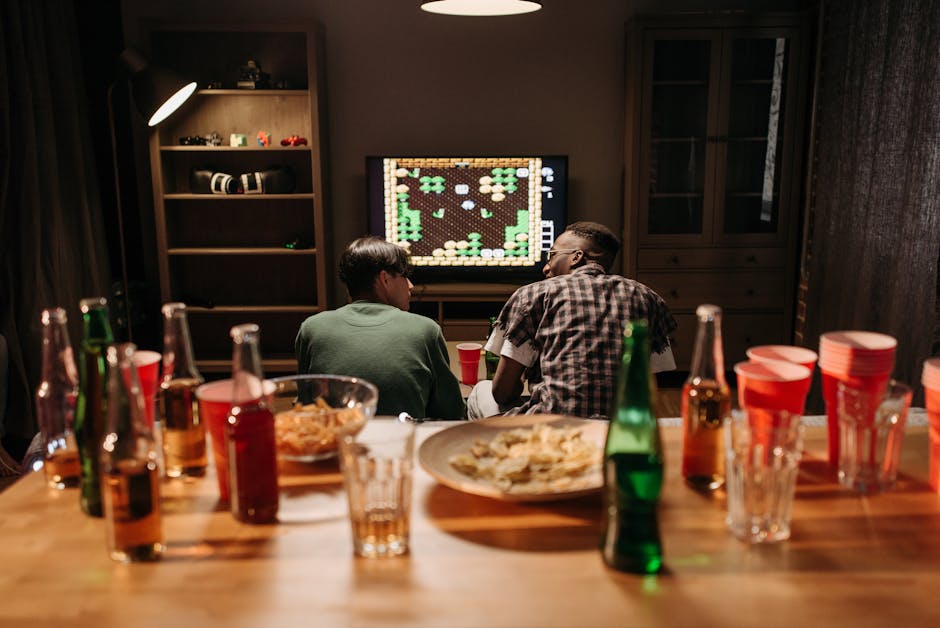Gaming TV Warranty Traps: Hidden Exclusions for Burn-In Damage

Imagine this: You’ve finally invested in a top-of-the-line gaming TV, boasting vibrant colors and lightning-fast response times. Hours of immersive gameplay stretch before you, promising countless virtual adventures. But then, a shadow appears—literally. Burn-in, a dreaded and often permanent discoloration, mars your screen, a ghostly reminder of your favorite HUD or game menu. You reach for your warranty, expecting a swift resolution, only to discover it doesn’t cover burn-in damage. This, unfortunately, is a common scenario, a trap many gamers fall into. This article dives deep into the murky waters of gaming TV warranties, exposing the hidden exclusions that can leave you with a hefty repair bill and a damaged display.
Understanding Burn-In: The Silent Screen Killer
What Causes Burn-In?
Burn-in, also known as image retention, occurs when a static image is displayed on a screen for an extended period. This prolonged exposure causes the phosphors or pixels that make up the image to wear out unevenly, leaving a faint but permanent ghost image. OLED and QLED TVs, while offering stunning visuals, are particularly susceptible to this issue due to their organic light-emitting diodes.
Think of it like leaving a book open in direct sunlight for too long. The pages exposed to the sun will fade, while the covered areas remain vibrant. Similarly, static elements on your screen, like HUDs, channel logos, or news tickers, can cause uneven wear on your display, leading to burn-in.
While modern TVs are designed with safeguards against burn-in, these measures aren’t foolproof. Extended gaming sessions, especially with static elements, can still put your display at risk.
The Impact on Gaming
For gamers, burn-in can be a significant issue. HUD elements, health bars, and minimaps are often static, making them prime candidates for causing burn-in. This can significantly detract from the immersive experience, leaving a distracting ghost image superimposed over your gameplay.
Imagine playing a fast-paced shooter with a faint outline of your previous match’s scoreboard lingering on the screen. Not only is it visually distracting, but it can also put you at a competitive disadvantage.
The impact goes beyond mere aesthetics. A burned-in screen can significantly diminish the resale value of your TV, making it a costly mistake.
Decoding Warranty Jargon: The Fine Print
Common Exclusions
Manufacturers often include specific exclusions in their warranties that cleverly sidestep responsibility for burn-in damage. These exclusions are often buried in the fine print, making them easy to overlook.
Common exclusions include phrases like “normal wear and tear,” “commercial use,” or “image retention caused by static content.” These seemingly innocuous terms can be interpreted broadly, allowing manufacturers to deny warranty claims for burn-in.
Another tactic is to limit the warranty coverage to a specific number of hours of use or to exclude burn-in caused by specific types of content, such as video games or news channels.
Understanding Your Rights
It’s crucial to thoroughly read your warranty before making a purchase. Pay close attention to the specific exclusions related to burn-in and image retention. Don’t hesitate to contact the manufacturer directly to clarify any ambiguous language.
Understanding your rights as a consumer is essential. In some jurisdictions, there are consumer protection laws that may offer recourse even if the manufacturer’s warranty excludes burn-in damage.
Keep a copy of your purchase receipt and warranty documentation in a safe place. This will be essential if you need to file a warranty claim or pursue other legal avenues.
Protecting Your Investment: Prevention and Mitigation
Practical Tips to Avoid Burn-In
Several preventative measures can significantly reduce the risk of burn-in. Adjusting your TV’s brightness settings, enabling screen savers, and varying your viewing habits can all help prolong the life of your display.
For gamers, consider enabling features like dynamic HUDs or adjusting the in-game brightness to minimize the impact of static elements. Regularly changing your game selection can also help prevent prolonged exposure to the same static images.
Avoid leaving your TV on a static image for extended periods, especially during long gaming sessions. Taking short breaks or switching to dynamic content can help prevent burn-in.
Dealing with Burn-In
If you notice signs of burn-in, there are a few steps you can take. Running pixel refresh cycles, which are often built into modern TVs, can sometimes help alleviate minor image retention. However, these methods are not always effective, especially for severe burn-in.
Contacting the manufacturer or a qualified repair technician is recommended for persistent burn-in. While repairs may be costly, they can sometimes restore the display to its former glory.
Prevention is always better than cure. Taking proactive steps to avoid burn-in is the best way to protect your investment and ensure a long and enjoyable gaming experience.
Conclusion
Investing in a high-quality gaming TV is a significant purchase, and protecting that investment is paramount. Understanding the nuances of warranties, particularly the hidden exclusions related to burn-in, is crucial for avoiding costly repairs and frustration. By being proactive in preventing burn-in and diligently reviewing warranty terms, gamers can enjoy countless hours of immersive gameplay without the fear of a ghostly reminder haunting their screens.

Leave a Reply